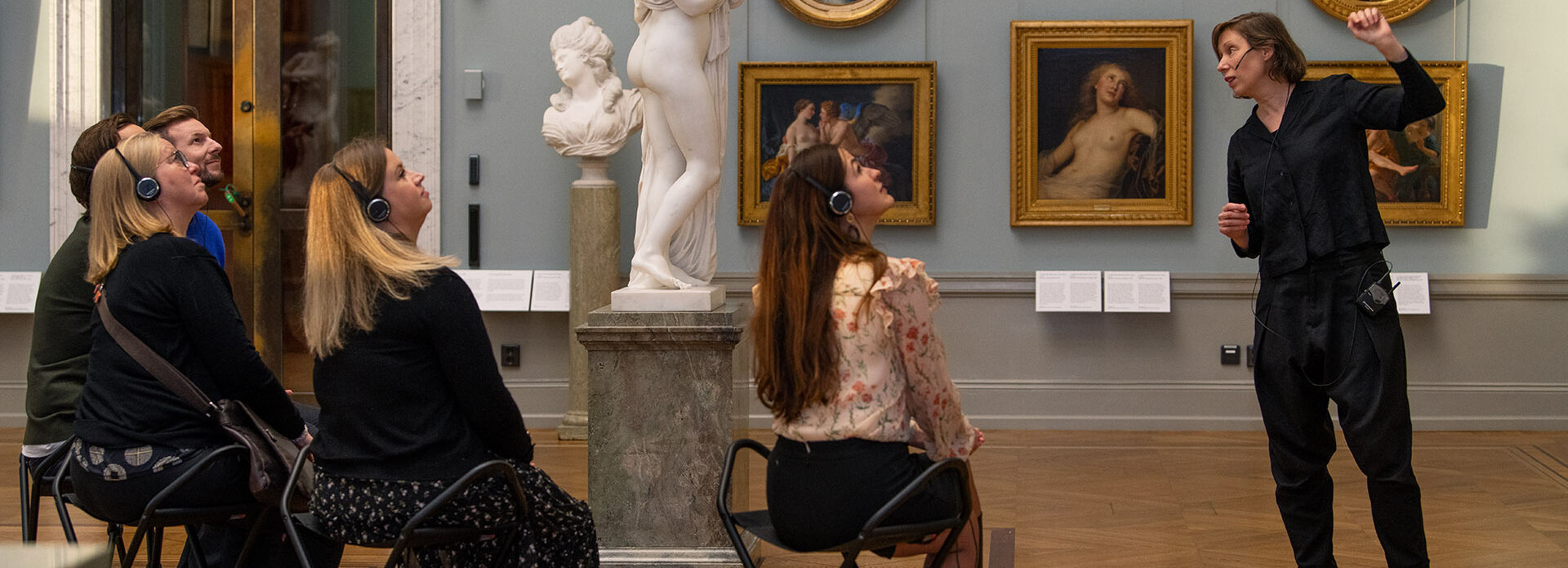April 2022
Each year, the Swedish Museums Association, a national organisation advocating in support of local museums, confers the Museum of the Year Award, Årets museum, on one of the nominated candidates. In 2022, Nationalmuseum was honoured to be shortlisted for this distinction alongside Halland Art Museum and Ájtte, Swedish Mountain and Sami Museum. Ultimately, Nationalmuseum was selected as the winner. General Director Susanna Pettersson reflects on why this type of award is importan for the entire cultural sector.
The jury entrusted with awarding this accolade consists of representatives from the Swedish Museums Association, ICOM Sweden and Sweden’s cultural sector and tourism industry. It explained its decision to name Nationalmuseum museum of the year for 2022 as follows:
“Art and enlightenment extend far beyond Nationalmuseum’s physical location thanks to its efforts to promote education and digital initiatives. The museum invites old and new visitors of all ages to join in discussions about art and in creative activities, both at the museum itself and in nursing homes, in sports gymnasiums and online. From its rich art and design collections to its newly renovated building featuring walls in bold hues, every facet of its activity is designed to make visiting the museum a pleasurable experience.
Nationalmuseum’s exhibitions, which offer fresh, new insight into otherwise neglected bodies of work and periods in art history, attract a broad audience. Furthermore, Nationalmuseum is leading advancements in the fields of digital communication and conservation techniques, and shares its methods with colleagues throughout Sweden. In aspiring to be a museum for everyone, Nationalmuseum demonstrates how museums can make a difference by broadening the discourse on art and culture in Swedish society.”
This is truly great and momentous praise, which every member of Nationalmuseum’s staff is delighted to receive. Being recognised as the Swedish museum of the year confirms that we are indeed on the right track in striving to become a museum for everyone, and further inspires and motivates us to continue our efforts to reach a larger audience, both here in Sweden and abroad.
On taking the stage at Halmstad’s Najaden cultural centre to receive this award from Sweden’s Minister for Culture, Jeanette Gustafsdotter, I felt a great sense of pride on behalf of the entire museum industry. Awards such as these are immensely important – not only for their nominees and winners but for the entire cultural sector. Receiving this award has given me cause to reflect on just why it is so important. I believe there are three reasons:
Highlighting the value of culture in Sweden. Sweden is home to approximately 1,500 museums. Their combined collection of cultural heritage artefacts is both vast and enormously important to Sweden’s identity. A single artefact – say, a pair of leather shoes from the Middle Ages found among Halland Art Museum’s collections – spirits us back to and reveals something about the everyday lives of people living in a bygone era. Our museums collect, preserve, conduct research and open their collections to others. Without them, the history of Sweden – to say nothing of the history of the world – would be that much more dim, and our ability to analyse contemporary developments and the potential that lies in our future would be much more limited. Our museums are platforms, arenas, living rooms, centres of knowledge and oases of serenity.
Inspiring visitors. Statistics compiled by the Swedish Museums Association reveal that Sweden’s museums receive around 28 million visits in a normal year. Including visitors to the various secondary venues throughout Sweden where artefacts from our collections are exhibited, such as the Jamtli museum in Östersund and Gripsholm and Läckö castles, Nationalmuseum received 1.3 million visits annually prior to the pandemic. While these figures are impressive, we know that such visits involve much more than just a simple interaction with the museum in the physical or digital space. They mean experiences and memories. They mean learning something new that you can take away with you. They mean growing as a person.
John H. Falk and Lynn D. Dierking, who have researched conceptualisations of personal identity among museum visitors, suggest that museum experiences are influenced by at least three dimensions: the personal, the sociocultural and the physical. That is to say, by your sense of identity and your needs, by whether you visit the museum alone or together with others, and by the physical experience the museum provides.
Promoting cooperation. Culture is society’s superpower. When socialising with others, we talk about the things we have experienced and wish to share. The films we have seen, books we have read, music we have listened to, and theatre performances and exhibitions we have attended are just a few examples. Without culture, our society would lack creativity and ingenuity – qualities that inspire connections among otherwise disparate societal sectors. It is vital that museums actively cooperate with and foster relationships that connect the various stakeholders in our society – from academia to the business world, to other types of organisations and civil society. To rephrase English poet John Donne’s famous quote, ‘No institution is an island’. Together, we can also invest in that which is so fundamental to museums’ remit – imparting something meaningful to each visitor, regardless of their social or cultural background.
Finally, I would like to thank everyone who contributed to Nationalmuseum’s nomination and to our success in being named the Swedish museum of the year in 2022. We will continue to do our very best to promote the value of culture in society, both today and tomorrow.
//Susanna Pettersson, Director General, Nationalmuseum
